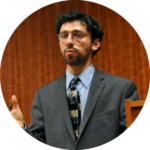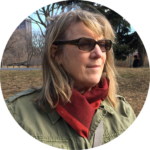Gelsenkirchen

First Jewish presence: early 19th century; peak Jewish population: approximately 1,700 in the 1920s; Jewish population in 1932/33: 1,440
In 1812, one Jewish householder was registered in Gelsenkirchen. The Jewish population grew from 96 in 1872 to 1,352 in 1915. The Jews of Gelsenkirchen, most of whom were traders, were initially affiliated with the Jewish community in Wattenscheid. In 1863, local Jews rented their own prayer hall at 34 Hochstrasse (present-day Hauptstrasse); in 1867, they built a community center at 4 Neustrasse (present-day Gildenstrasse); the premises accommodated a prayer room, a mikveh, a classroom and an apartment. In 1874, local Jews established their own community, breaking away from Wattenscheid. Communal institutions included a cemetery on Wanner Strasse (used until 1936) and a synagogue attended by liberal Jews on Neustrasse (presentday Grindelstrasse/Georgstrasse), the latter of which was inaugurated in August of 1885 and seated 256 men and 106 women; an organ was later installed there. Orthodox congregations and associations, the first of which was founded in 1876, established prayer rooms on Arminstrasse, Husemannstrasse, Bahnhofstrasse and Florastrasse. Records also tell us that the community established a Jewish public school at 44 Ringstrasse in 1894 (enlarged in 1907) and a new cemetery in Ueckendorf in 1927. Although anti-Jewish discrimination and violence became routine after the Nazis’ election victories, Jewish cultural life continued to flourish. In 1935, Rabbi Dr. Galliner, who served the community from 1914 until 1939, founded a school for adult education; community members also organized Jewish theater performances and courses in Hebrew and English. Active in Gelsenkirchen were three charities—a Jewish women’s association, a men’s association and a local Jewish Women’s League—a sports club, a youth organization and a branch of the Reich Federation of Jewish Front Soldiers. During the 1930s the mikveh was still functioning and, at one point, 140 children were attending the Jewish public school. On Pogrom Night, rioters vandalized Jewish homes and burned down the synagogue and the adjacent Jewish restaurant. Local Jews were beaten and arrested, and some were sent to Sachsenhausen, where 13 died. Many Jews left Gelsenkirchen after Pogrom Night; Rabbi Galliner immigrated to England in 1939. The remaining Jews were subjected to forced labor in underground construction sites and coal mines. Later, in 1942, 350 local Jews were deported to Riga, 40 to Warsaw and 90 to Theresienstadt. At least 574 Gelsenkirchen Jews perished in the Shoah. After the war, 45 survivors returned to Gelsenkirchen and reestablished the community. In 1958, a community center was opened at Von-der-Recke-Strasse; and in 2007 a new synagogue—it bears a memorial plaque—was consecrated on the site of the destroyed house of worship. Twenty-eight memorial stumbling blocks, unveiled at different locations throughout the city, remind passersby of the destroyed community.Heidemarie Wawrzyn
Copyright: Pogrom Night 1938 - A Memorial to the Destroyed Synagogues of Germany/ Germansynagogues.com
Notes
Sources: The Encyclopedia of Jewish Life Before and During the Holocaust, Shmuel Spector [Ed.], [publisher] Yad Vashem and the New York University Press, 2001., Führer durch die Jüdische Gemeindeverwaltung und Wohlfahrtspflege in Deutschland 1923-1933, Andreas Nachama, Simon Hermann [Eds.], [publisher] Edition Hentrich, 1995., Synagogen Internet Archiv, www.synagogen.info www.gelsenkirchener-geschichten.de www.stolpersteine-gelsenkirchen.de
Details
| Date Added | Feb 19, 2020 |
|---|---|
| Category | Residential |
| Country | DE |
| State | North Rhine-Westphalia |
| City | Gelsenkirchen |
| Exhibits | Pogrom Night 1938 - A Memorial to the Destroyed Synagogues of Germany |
Have additional information, photos, connections, or other resources to contribute?
Help Us in the race against time to time document Jewish history!






